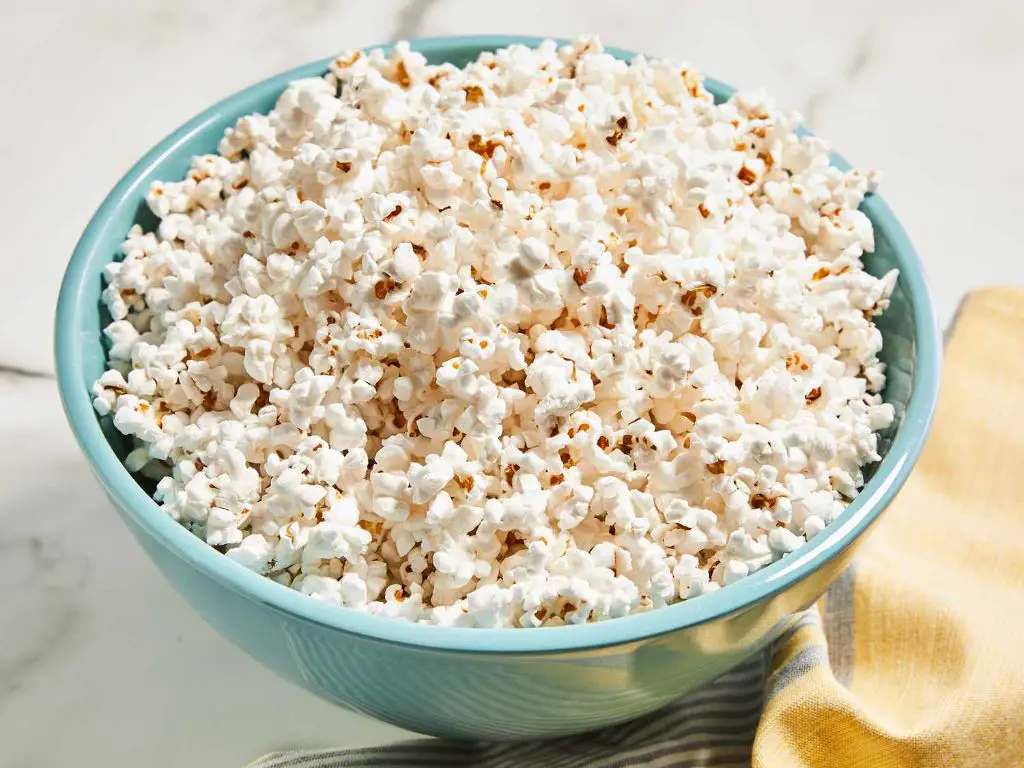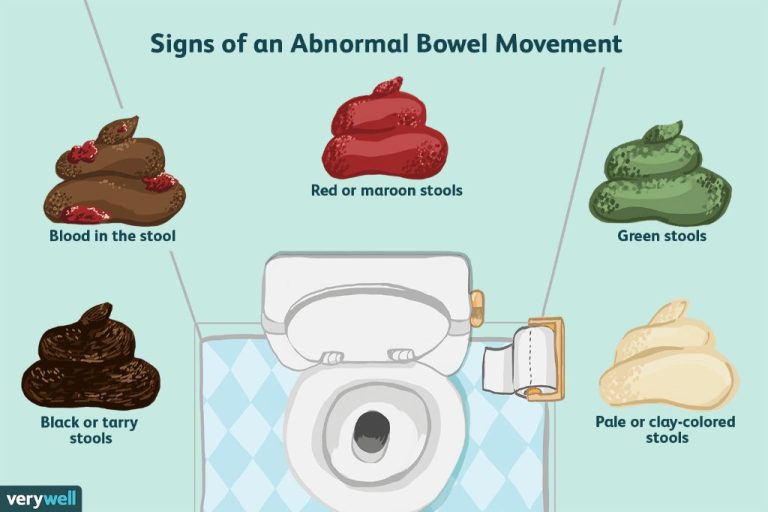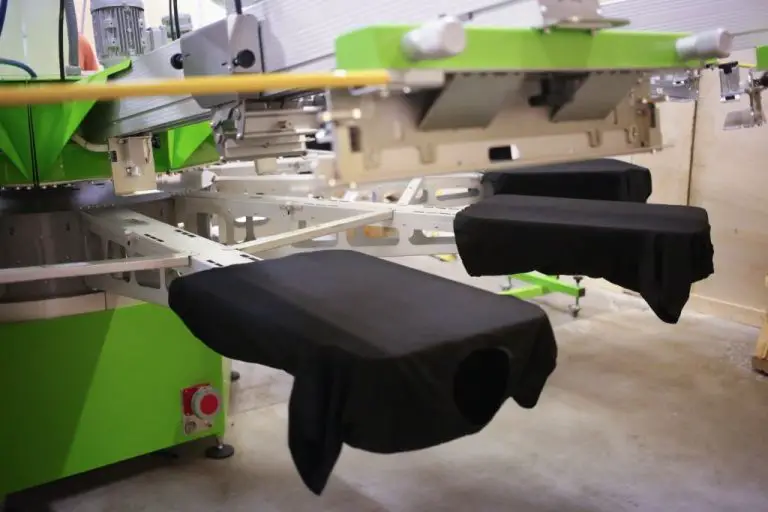Can I Microwave Popcorn In A Bowl?
Popcorn is a beloved snack enjoyed by people across the globe. While traditionally prepared in popcorn poppers or on the stovetop, many have taken to putting popcorn kernels in a bowl and microwaving them for convenience. This method is quick and easy, requiring only a few minutes in the microwave to produce fresh, hot popcorn. But is microwaving popcorn in a bowl really the best approach? Does it produce the same light, fluffy popcorn as other preparation methods? Are there any downsides to this shortcut?
In this article, we’ll explore the pros and cons of microwaving popcorn in a bowl. We’ll look at the right type of bowl to use, microwave settings, and flavors and toppings that take microwave popcorn from dull to delicious. You’ll learn some tricks to make microwave bowl popcorn crisp and fluffy, as well as how to store any leftovers. Let’s pop off this discussion by weighing the advantages against the disadvantages of this convenient popcorn preparation method.
Pros of Microwaving Popcorn in a Bowl
One of the biggest pros of microwaving popcorn in a bowl is even heat distribution. Unlike traditional microwave popcorn bags that have hot and cold spots, bowls allow the kernels to spread out and heat evenly. This results in fewer burned kernels and more popped popcorn overall [1]. The bowl shape helps circulate hot air to reach all sides of kernels simultaneously. With even heating, you can maximize popcorn volume and minimize waste.
Bowls are also reusable and eco-friendly. Disposable popcorn bags add unnecessary plastic waste each time you make popcorn. A microwave-safe bowl provides a sustainable alternative you can use again and again. Clean up is easy since the bowl contains the kernels and popped corn instead of getting oil and kernels stuck inside the microwave.
Bowl popping requires no oil or butter, resulting in lower-calorie popcorn. You can customize by adding your own toppings like spices, salt, or olive oil after cooking. The popcorn remains fluffy and crunchy without being greasy. Overall, microwaving popcorn in a bowl leads to better taste, more popped kernels, and less mess and waste.
Cons of Microwaving Popcorn in a Bowl
While microwaving popcorn in a bowl has its advantages, there are some potential downsides to consider as well:
Overcooking and burning – Bowls, especially ceramic ones, retain heat very well. This means if you microwave popcorn for too long in a bowl, the residual heat can lead to overcooked, dried out, or burnt popcorn even after removing it from the microwave. It’s important to watch cooking times closely. Glass bowls tend to retain less heat.
Unpopped kernels – Since microwave popcorn relies on the kernels heating up and expanding to pop, it can be difficult to ensure even cooking in a bowl. This often leaves many unpopped kernels at the bottom of the bowl when cooking time is up. The shape and depth of the bowl can exacerbate this issue compared to a paper bag designed for even microwave exposure.
Mess – Once popcorn starts popping, it can easily overflow the sides of a bowl even if you started with a single layer of kernels. This leads to loose kernels and popcorn bits strewn across the inside of the microwave. The bowl also needs to be cleaned after use.
Potential to burn yourself – The bowl retains heat after microwaving so you need to be careful when removing it to avoid burning fingers and hands. The hot bowl could also damage surfaces.
Choosing the Right Bowl for Microwaving Popcorn

When choosing a bowl to microwave popcorn in, there are a few considerations to keep in mind regarding the material, shape, and size.
For material, silicone or glass bowls tend to work best. Silicone is heat-resistant, flexible, and safe for microwaving. Glass is also microwave-safe. Avoid using plastic bowls unless specifically labeled for microwave use, as they can melt from the heat. Metal bowls should also be avoided, as they can damage the microwave.
The shape of the bowl matters too. Look for bowls that are wider rather than tall, with sloped sides rather than straight sides. This shape helps distribute heat and gives the kernels room to pop evenly. Bowls with lids or built-in colanders are also handy to keep popped kernels contained while allowing steam to escape.
When it comes to size, choose a bowl that’s big enough to accommodate the amount of popcorn you want to make, typically 3 quarts or larger. Going too small can lead to overflowing. But don’t go too big either, as all that empty space can impact even cooking. Follow any size guidelines provided for specialty microwave popcorn bowls.
So in summary, a good microwave popcorn bowl is typically made of silicone or glass, with a wide sloped shape and lid, and around 3 quarts in capacity. This provides the right conditions for popping popcorn successfully and evenly in the microwave.
Sources:
https://www.cuisineathome.com/review/popcorn-bowl/
https://www.opopop.com/products/opopop-popcorn-popper
Microwave Settings
The power level and cooking time are key factors when microwaving popcorn in a bowl. Most microwave popcorn instructions recommend using high power, around 90-100% (level 10 on many microwaves). This helps the kernels pop faster and more evenly.
As for time, start with 1-2 minutes and listen for popping to slow before removing the bowl. Cooking times can vary greatly based on your microwave wattage, the size/shape of bowl, and amount of kernels. For example, the Nordic Ware Popcorn Popper instructions recommend 2-3 minutes at high power for a single serving (https://www.nordicware.com/products/quick-pop-single-serve-popper/). The Pampered Chef Microwave Popcorn Maker suggests starting with 2 minutes for a double batch and adding 30 seconds as needed, with a max of 4 minutes (https://www.pamperedchef.com/shop/Kitchen+Tools/Microwave+Cooking/Microwave+Popcorn+Maker/1457).
It’s best to start with less time and add more as needed. Overcooking can burn the popcorn or even damage the bowl. Listen for the popping to slow to 1-2 seconds between pops, then remove from microwave.
Adding Oil or Butter
Adding a small amount of oil or butter to the popcorn helps it pop more fully and prevents it from drying out in the microwave. According to the Nordic Ware Microwave Popcorn Popper instructions, 2 tablespoons of oil is recommended for popping popcorn in the microwave (https://www.nordicware.com/products/microwave-popcorn-popper/).
Oils like canola, peanut, or olive oil work well. Some recipes also suggest butter or coconut oil. The oil helps distribute heat evenly so more kernels pop. Just a teaspoon or two is usually enough for a single bowl of popcorn.
Make sure to rub or brush the oil evenly over the bottom and sides of the bowl you are using before adding the kernels. You don’t need to coat every kernel, just coat the bowl. The Amish Country Popcorn Microwave Popcorn Gift Bowl Set includes a bottle of canola or peanut oil for popping (https://amishcountrypopcorn.com/microwave-popcorn-gift-bowl-set/).
Adding a bit of butter after popping gives the popcorn a nice rich, buttery flavor. Let the popcorn cool slightly first so the butter evenly coats the popcorn. Flavored butters or oils can also be used to give delicious flavors without extra calories from sugar or salt.
Flavors and Toppings
Microwaving popcorn in a bowl allows for easy seasoning and flavor customization. Here are some creative ways to enhance microwave popcorn:
Salt and butter are classic popcorn toppings. For a flavor twist, use flavored salts like garlic salt or ranch seasoning. You can also use olive oil or coconut oil instead of butter.
Sprinkle on spices and herbs before microwaving. Chili powder, cumin, oregano, and smoked paprika all make popcorn more savory. Cinnamon and nutmeg add a hint of sweetness.
Sweeten things up with a drizzle of honey, maple syrup, or agave after popping. You can also sprinkle on brown sugar.
Mix in dried fruits like raisins, cranberries, or mango for a tropical twist. Nuts like peanuts, almonds, and cashews also pair well with popcorn’s crunchy texture.
Make cheesy popcorn by adding Parmesan, nutritional yeast, or popcorn seasoning blends. You can also use store-bought cheese powders.
Chocolate lovers can drizzle melted chocolate over popcorn for dessert. Consider adding sprinkles too.
If using packaged microwave popcorn, try flavored varieties like kettle corn, white cheddar, or caramel for built-in flavor.
Get creative and make your own spice blends to give microwave popcorn unique flavors. The possibilities are endless!
Storage
Proper storage is key for maintaining the freshness of your popcorn for as long as possible after popping it. According to this source, you can store popcorn at room temperature in an airtight container for up to 1-2 weeks without it going stale. Allowing popped popcorn to come into contact with air is one of the main culprits of it losing its fresh, crisp texture. Storing it in a sealed container prevents oxygen from making it soggy.
For even longer freshness, you can store popcorn in the refrigerator in an airtight container for 2-3 weeks or in the freezer for up to 3 months, according to this article. The cold environment helps retain moisture and preserves the popcorn’s signature crunch. Just be sure to let it come fully to room temperature before eating it if you refrigerate or freeze it.
Glass, plastic, or popcorn-specific tin containers all work well for storage. The key is that the container has an airtight seal to block out air and prevent staleness. Change the container if you notice moisture or condensation building up inside, as that can make the popcorn soggy.
Microwaving Other Snacks in a Bowl
In addition to popcorn, bowls can be used to microwave a variety of other snacks. Here are some options to consider:
- Oatmeal – Oatmeal can easily be cooked in the microwave using a microwave-safe bowl. Make sure to use the oven setting for oatmeal and stir periodically.
- Soup – Pre-packaged microwaveable soups often come in microwavable bowls. Follow instructions on packaging.
- Frozen meals – Many frozen meals designed for the microwave come in plastic bowls and trays. Check that the container is rated for microwave use before cooking.
- Reheating leftovers – Bowls work well for reheating leftovers in the microwave. Use microwave-safe containers and reheat in short intervals to prevent overcooking.
- Nachos/tacos – Individual servings of nachos or taco meat with toppings can be assembled in a bowl and quickly melted together in the microwave.
- Vegetables – Fresh or frozen vegetables can be steamed in the microwave using a microwave-safe bowl with a small amount of water.
Always refer to microwave instructions for any pre-packaged foods. And take care when microwaving in plastic to avoid harmful chemicals leaching into food.
Conclusion
Microwaving popcorn in a bowl can be a quick, easy and fun snack with the right techniques. Choosing an appropriate microwave-safe bowl, adjusting cooking times and power levels, and experimenting with flavors allows you to customize the experience. While kernals may fly out of the bowl, limiting overcooking prevents burning. With some trial and error, microwaving popcorn in a bowl can become a tasty go-to snack. Just be sure to keep an eye on it as it pops and adjust seasonings to taste.
In summary, microwaving popcorn in a bowl takes a bit more effort than using a bag, but gives you more control over portions and flavor. Be mindful of the bowl material, shape and size. Start with lower power and cooking times, checking frequently to avoid burning. Feel free to get creative with oils, seasonings and toppings to make it your own. Store any leftovers in an airtight container. Follow these tips for quick, easy and delicious popcorn straight from your microwave.





